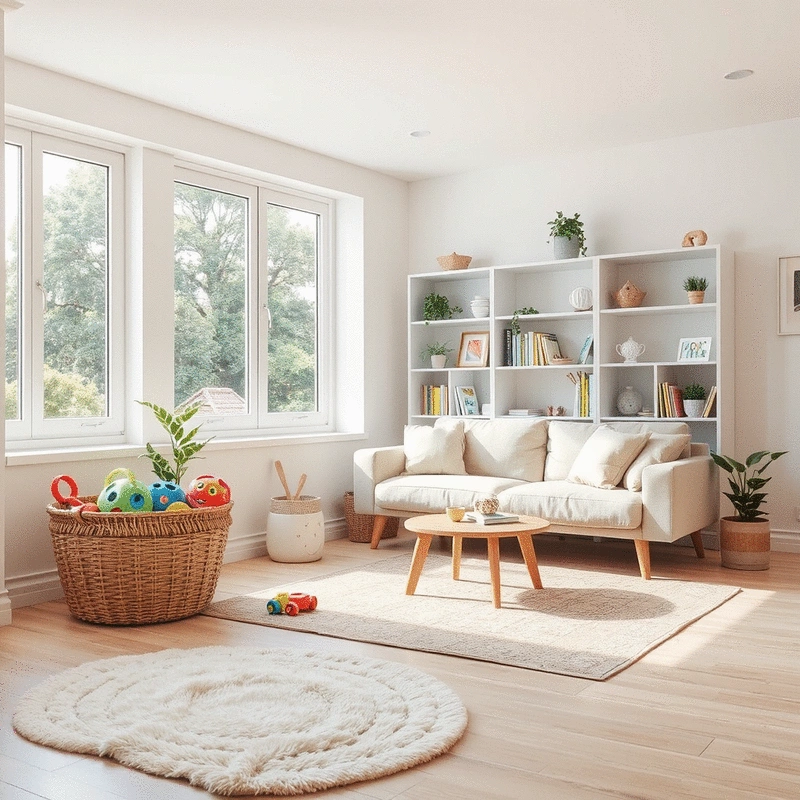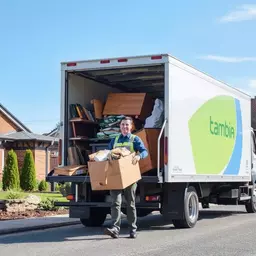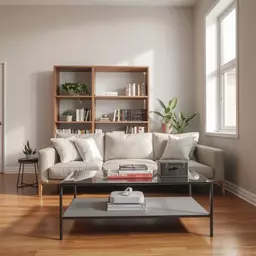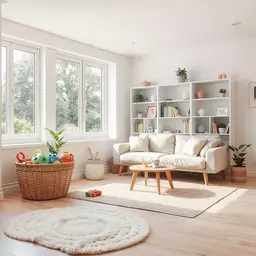Decluttering Tips for Busy Families

Creating a clutter-free home can significantly enhance family dynamics and foster a peaceful environment. As parents, we often face the challenge of managing the chaos that comes with kids and their belongings. The good news? With effective decluttering strategies, you can transform your space and your family life. Let's delve into the key takeaways that will help you embrace a more organized and harmonious home!
What You Will Learn
- Importance of Decluttering: A clutter-free environment creates a safer space for children, promotes mental clarity, and encourages responsibility.
- Benefits for Family Life: Decluttering fosters better family bonding, increases productivity, and makes maintenance easier.
- Effective Organization Strategies: Establish functional drop zones and practice the "One-In, One-Out" rule to control clutter sustainably.
- Engaging Kids: Involve children in decluttering through games, toy rotation, and incorporating educational toys to make the process fun.
- Creating Routines: Set a regular decluttering schedule that includes the whole family, making it a collaborative effort for lasting organization.
Key Benefits of Decluttering for Families
Decluttering not only enhances the home environment but also positively impacts family dynamics. Below are some key benefits highlighted in the article, showcasing why embracing a clutter-free home for calm is so vital for families.
Creates a Safer Environment
Less clutter means fewer hazards for little ones to trip over.
Promotes Mental Clarity
A tidy space encourages a calm and focused mindset for both kids and parents.
Encourages Responsibility
Teaching kids to declutter fosters a sense of ownership and responsibility.
Improved Family Bonding
With less mess, families can spend quality time together in a relaxing atmosphere.
Increased Productivity
A tidy environment helps everyone focus on their tasks, from homework to household chores.
Easy Maintenance
Fewer items make cleaning and organizing a breeze, saving valuable time!
Practical Decluttering Tips for Australian Families with Kids
As a parent, I know that keeping a tidy home can feel like an uphill battle, especially with kids around! At Organized Aussie Life, I believe that a clutter-free environment is essential for a happy family life. Decluttering isn't just about aesthetics; it's about creating a living space where everyone can thrive. Let's dive into why decluttering is important for families with children and explore practical strategies to achieve it!
Understanding the Need for Decluttering in Family Life
Why Decluttering Matters for Families with Children
Decluttering plays a crucial role in a family's day-to-day life. Kids can accumulate toys, clothes, and other belongings at an astonishing rate! When these items pile up, it can lead to stress and frustration for everyone. Here are a few reasons why decluttering matters:
- Creates a Safer Environment: Less clutter means fewer hazards for little ones to trip over.
- Promotes Mental Clarity: A tidy space encourages a calm and focused mindset for both kids and parents.
- Encourages Responsibility: Teaching kids to declutter fosters a sense of ownership and responsibility.
Benefits of a Clutter-Free Home for Australian Families
Embracing a clutter-free home can lead to numerous benefits for families. A well-organized space not only looks appealing but also functions better. Some of these advantages include:
- Improved Family Bonding: With less mess, families can spend quality time together in a relaxing atmosphere.
- Increased Productivity: A tidy environment helps everyone focus on their tasks, from homework to household chores.
- Easy Maintenance: Fewer items make cleaning and organizing a breeze, saving you valuable time!
Effective Organization Strategies for Family Spaces
Creating Functional Drop Zones for Kids' Belongings
Establishing functional drop zones can transform how your family manages belongings. These designated areas allow kids to easily deposit their items without creating chaos. Consider these tips for effective drop zones:
- Backpacks and Shoes: Use a specific area by the front door to store kids' bags and shoes.
- Art Supplies: Set up a low shelf or bin for easy access to art and craft materials.
- Homework Stations: Create a space with necessary supplies for kids to do their schoolwork.
Implementing the "One-In, One-Out" Rule for Sustainable Living
The "One-In, One-Out" rule is a fantastic strategy to maintain balance in your home. For every new item your child receives, encourage them to part with something they no longer use. This practice can help in various ways:
- Teaches Value: Kids learn the importance of valuing their belongings.
- Reduces Clutter: This simple rule keeps the accumulation of items in check.
- Promotes Mindfulness: It encourages thoughtful consideration about what to keep.
Storage Solutions for Kids' Rooms and Play Areas
Finding the right storage solutions can make all the difference in maintaining an organized space. Here are some practical ideas to consider for your kids' rooms:
- Clear Bins: Use transparent storage bins for toys, so kids can see what's inside.
- Label Everything: Labels help kids know where things belong, making cleanup easier.
- Multi-Functional Furniture: Invest in furniture that doubles as storage, like ottomans or beds with drawers.
Engaging Kids in the Decluttering Process
Using Games and Visual Aids to Make Decluttering Fun
Getting kids involved in decluttering can be a challenge, but it can also be a fun experience! One effective approach is to turn decluttering into a game. Here are some engaging ideas:
- Treasure Hunts: Hide a few favorite toys and tell them to find and organize only the ones they love the most.
- Declutter Bingo: Create bingo cards with tasks to complete. Kids can earn small prizes for completing rows!
- Before-and-After Photos: Take pictures of messy areas, then show the transformation once decluttered. Kids will love seeing the difference!
Tips for Introducing Toy Rotation to Keep Spaces Organized
Toy rotation is a brilliant way to maintain interest and organization among your kids' toys. By rotating toys, you can keep spaces tidy while keeping playtime exciting. Here’s how to implement it:
- Curate a Collection: Select a few toys for each rotation and store the rest away.
- Set a Schedule: Change out toys every month or season to keep things fresh.
- Involve Kids: Let them help choose which toys to keep out. This promotes ownership and engagement!
Incorporating Educational Toys into Your Decluttering Strategy
Incorporating educational toys into your decluttering strategy can promote learning while keeping the space organized. Here are some tips to consider:
- Quality over Quantity: Focus on keeping fewer high-quality, educational toys rather than many less useful ones.
- Storage for Learning Materials: Designate a space for books and learning games, making them easily accessible.
- Engage in Learning: Encourage your kids to use these toys as a part of their daily routines or study times.
At Organized Aussie Life, I’m passionate about helping families like yours create serene, clutter-free living spaces. By adopting these practical decluttering tips, you can turn your home into a more organized and harmonious environment for your kids to grow and thrive in! To further enhance your home, consider exploring sustainable rubbish removal in Sydney, an important aspect of maintaining a truly organized and eco-friendly home. Let's continue this journey together in the next section!
Quick Summary
Here's a brief recap of the key points discussed so far:
- Decluttering creates a safer environment and promotes mental clarity for families.
- Implementing strategies like functional drop zones and the "One-In, One-Out" rule can help manage clutter effectively.
- Engaging kids in the decluttering process through games and toy rotation encourages responsibility and ownership.
Frequently Asked Questions About Family Decluttering
Q1: Why is decluttering important for families with children?
Decluttering creates a safer environment by reducing hazards, promotes mental clarity for both parents and children, and encourages responsibility in kids by teaching them to manage their belongings. It also leads to improved family bonding and increased productivity.
Q2: What is the "One-In, One-Out" rule, and how does it help with decluttering?
The "One-In, One-Out" rule means that for every new item your child receives, an old item they no longer use should be removed from the home. This strategy prevents clutter accumulation, teaches kids the value of their belongings, and promotes thoughtful consideration about what to keep.
Q3: How can I make decluttering fun for my kids?
You can make decluttering fun by turning it into a game, such as a "Treasure Hunt" for favorite toys to organize or "Declutter Bingo" with small prizes. Taking "before-and-after" photos can also help kids visualize the positive impact of their efforts.
Q4: What are "functional drop zones," and how do I implement them?
Functional drop zones are designated areas where specific items are stored for easy access and organization. Examples include a spot by the front door for backpacks and shoes, a low shelf for art supplies, or a dedicated homework station. These zones help kids easily put away their belongings without creating chaos.
Q5: How can toy rotation help keep my home organized?
Toy rotation involves selecting a small collection of toys to be available for play at any given time, while storing the rest away. By changing out toys periodically (e.g., monthly or seasonally), you maintain children's interest, keep play spaces tidy, and prevent overwhelming amounts of toys from accumulating.
Summarizing Key Decluttering Strategies for Australian Families
Decluttering is not just about tidying up; it's about enhancing our family dynamics and creating a more peaceful home environment. As a parent, I've seen firsthand how a clutter-free space can positively impact our family life. With a well-organized home, we can focus on what truly matters—spending time together, enjoying activities, and fostering a sense of calm.
When we prioritize decluttering, we're not just clearing out physical space; we're also making room for better communication and relationships within the family. A clutter-free environment encourages children to play freely and helps them learn responsibility for their belongings. This is important for developing lifelong organizational skills!
The Importance of Decluttering for Family Dynamics
Creating a harmonious home goes hand in hand with decluttering. It allows us to establish clear boundaries on what items we truly value and need. By regularly assessing our possessions and letting go of excess, we can ensure our living space remains functional and inviting. For more specific insights, check out these decluttering tips for Aussie homes.
Along with practical benefits, having a clutter-free home fosters a positive mindset. Kids are more likely to engage with their surroundings when they feel at ease, and this can lead to better focus and creativity. Remember, it's not just about what we own, but how our environment supports our family's growth!
How a Clutter-Free Environment Enhances Family Life
- Reduces stress and anxiety for all family members.
- Encourages children to be more independent and responsible.
- Improves communication by creating a positive atmosphere.
- Fosters creativity and play, allowing kids to explore freely.
The Role of Family Goals in Clutter Management
Having a shared vision for your home can be incredibly motivating. I encourage families to set organizational goals together. Whether it’s a monthly decluttering session or a goal to maintain tidy play areas, having collective aspirations can make the process more engaging.
Additionally, discussing these goals regularly can help everyone stay on track. You can create a family vision board or chart to visualize your progress. This can be an exciting way to include kids in decision-making, helping them feel more responsible for their spaces!
Encouraging Ongoing Engagement and Participation
To maintain an organized home, it's vital to create a routine that includes everyone in the family. Regular decluttering sessions not only keep spaces tidy but also instill valuable habits in our children. Try setting aside time each week to tackle different areas, making it a family affair!
Creating a Family Routine for Regular Decluttering Sessions
- Set a specific day each week dedicated to decluttering.
- Assign areas or tasks to each family member to keep it fair.
- Celebrate achievements together with a family treat or fun activity.
Final Tips for Maintaining an Organized Home with Kids
To keep your home organized, it’s essential to establish a few simple rules that everyone can follow. One effective strategy is the "one-in, one-out" method, which helps control the influx of new items.
Another helpful tip is to regularly audit storage and toy boxes. This can ensure that every item has a purpose and is in good condition. A little effort from everyone can lead to a much more manageable living space!
Family Decluttering Day: Making It a Fun Event
Why not make decluttering day an event to look forward to? You can combine it with a fun theme, such as a treasure hunt for hidden toys or items that need to go! This approach not only lightens the mood but also transforms the chore into a bonding experience for the family.
In my family, we like to have music playing and even offer small rewards for the best decluttered space. This turns a task that might feel tedious into something everyone enjoys!
Call to Action: Start Your Decluttering Journey Today
If you're ready to embrace a more organized life, why not take the first step today? Download our printable checklists and resources designed specifically for Australian families. These tools can help guide you through your decluttering journey with ease.
Finally, I invite you to join the conversation! Share your own decluttering experiences and tips with our community. For more comprehensive guidance, you might find our guide on how to declutter your home: Australian tips particularly useful. Together, we can inspire one another and create clutter-free homes that promote harmony and happiness.
Recap of Key Points
Here is a quick recap of the important points discussed in the article:
- Decluttering Benefits: A clutter-free home creates a safer, calmer environment that enhances family dynamics and encourages responsibility in children.
- Effective Organization Strategies: Implement functional drop zones, the "One-In, One-Out" rule, and smart storage solutions to maintain an organized living space.
- Engaging Kids: Involve children in the decluttering process through games, toy rotation, and educational toy focus to make it fun and educational.
- Regular Family Routines: Schedule weekly decluttering sessions and set family organizational goals to foster teamwork and accountability.
- Make It Enjoyable: Turn decluttering into a fun event with themes and rewards to encourage participation and make the process enjoyable.
Popular Posts
 How would your life change if your home was clutter-free? Imagine coming back to a space that exudes
How would your life change if your home was clutter-free? Imagine coming back to a space that exudes
 Did you know that a clutter-free environment can significantly improve your mental well-being? Declu
Did you know that a clutter-free environment can significantly improve your mental well-being? Declu
 Home organization is more than just a trend; it's a lifestyle choice that can profoundly impact your
Home organization is more than just a trend; it's a lifestyle choice that can profoundly impact your
 Creating a clutter-free home can significantly enhance family dynamics and foster a peaceful environ
Creating a clutter-free home can significantly enhance family dynamics and foster a peaceful environ
